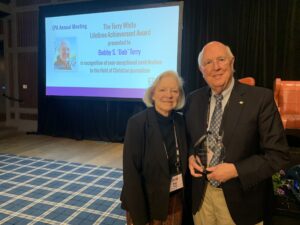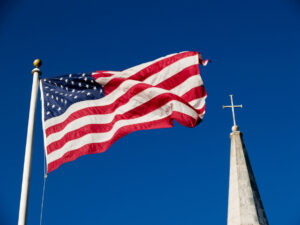
FORT WORTH, Texas (BP)–There is a strange irony that accompanies the recent call to legalize same-sex “marriage.”
The irony is that the battle cry to sanction same-sex relationships is led by the same group that claims to celebrate “diversity.” However, homosexual unions — legal or otherwise — do anything but celebrate diversity.
To be sure, proponents of same-sex “marriage” argue that such a relationship simply constitutes a different version of the monogamous relationship enjoyed by heterosexual couples. Thus, they argue, to legalize homosexual “marriage” is to legalize diversity and to celebrate the rainbow of love.
But same-sex unions are a contradiction of diversity. Ironically, they are a contradiction of the homosexual movement’s primary symbol — the rainbow. After all, what is it that makes a rainbow beautiful? Is it not the same thing that makes listening to a symphony a delight — namely, harmony? But harmony can exist only when different things — colors, musical instruments — are united in a meaningful order.
Homosexual unions, instead, celebrate sameness: sexual unions between members of the same gender, domestic unions between persons of the same sex. And where everything is the same, diversity is absent and harmony by definition cannot exist. Same-sex “marriages” are the social equivalent of a rainbow painted with only one color, of a symphony performed with only one sort of instrument. The movement to sanction same-sex relationships is a movement to sanction monotony and is therefore a movement against the harmony of God’s diverse and well-ordered creation. Such a movement is certainly not about diversity.
God’s design for marriage, on the other hand, affirms diversity. The creation of man as “male and female” (Genesis 1:27) — they are different — is part of what makes God’s creation “very good” (Genesis 1:31). Adam’s poem for Eve in Genesis 2:23 celebrates the fact that she is his perfect complement. She is his equal: “bone of my bones”; yet she is different: not “man,” but “woman.” Because she is his complement, Eve can be Adam’s true counterpart and companion. This is the biblical pattern for marriage: diversity united in harmony.
Christians should reclaim diversity as one of the intrinsic goods of the biblical design for marriage. Nevertheless, as we do, let us also remember that the rainbow’s symbolic value does not finally lie in its capacity to expose the inconsistencies of the same-sex “marriage” agenda. As in Noah’s days, so it is in ours: the rains of judgment are not God’s final word for an increasingly discordant society. Rather, the rainbow signifies promise and hope for a world disordered by sin. The rainbow ultimately signifies what Jonathan Edwards called “the supreme harmony of all” — the promise of life in harmonious fellowship with the triune God.
“Therefore a man shall leave his father and mother and hold fast to his wife, and the two shall become one flesh. This mystery is profound, and I am saying that it refers to Christ and the church” (Ephesians 5:31-32, ESV).
–30–
Scott Swain is assistant professor of systematic theology at Southwestern Baptist Theological Seminary.
For information about the national debate over same-sex “marriage,” visit
http://www.bpnews.net/samesexmarriage















